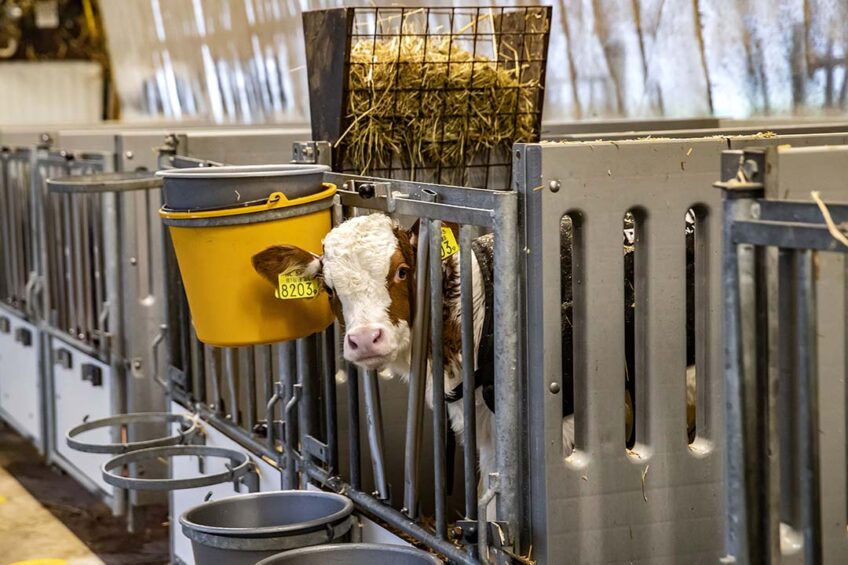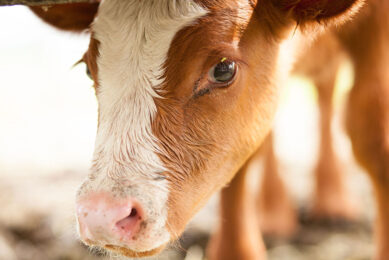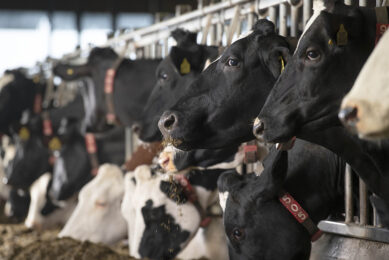How to prevent bovine respiratory disease complex in calves

Environmental factors contribute to the incidence and severity of bovine respiratory disease complex by facilitating the spread and survival of pathogens and weakening the overall defense mechanism of the calves. The main environmental risk factors include housing type, air quality, temperature, relative humidity, ammonia and hydrogen sulfide concentration, and aerial germ load and are discussed in this article.
Housing types
Outdoor individual calf rearing has various benefits including higher weight gain, less diarrhoea incidence, lower morbidity and mortality, and better production and reproduction performance compared to indoor group housing. In addition, there is a negligible number of respiratory problems in the outdoor system as it facilitates the free movement of air and low concentration of pathogens in the open air.
In a barn rearing system, the individual calf cage needs to be at least 3 m2 in size, with solid walls on both sides to decrease pathogen transmission between the individual cages and the prevalence of respiratory diseases. Furthermore, a proper ventilation system is required to prevent the development of a highly polluted microenvironment in the barn.
Air quality
Proper air quality is a critical factor affecting dairy calves’ respiratory health determined by the design and operation of buildings, ventilation systems, stocking density, floor and litter material, and manure management. Mean temperature, ammonia concentration, and air movement are the most important air quality indicators linked to airway inflammations. Most air quality indicators are categorised by daily variation and their measurements should take place at the height of the animals.
Temperature, and relative humidity
The temperature of the air and surfaces inside the barn, and relative humidity are important factors affecting the microclimate for calves. Calves have functional thermoregulation after birth and can adapt to the outer temperature if they have access to the right amount of energy, dry bedding, and a draft-free environment. Temperatures less than 10°C in combination with a relative humidity greater than 85% and wind affect survival and multiplication of respiratory pathogens depending on their species and properties, impairs the respiratory health of calves, and leads to increased morbidity and mortality.
The relative humidity of calves’ barn depends on the ambient temperature, the amount of urine and faeces, the absorption capacity of the bedding, and the effluent drinking water. On the other hand, relative humidity less than 50% can dry the epithelial surface of the respiratory tract, leading to infections.
Ammonia concentration
Ammonia is a colourless water-soluble gas with a pungent odour evenly distributed in the air space of the barn. Ammonia plays an important role in the development of respiratory diseases by forming corrosive ammonium hydroxide on the wet respiratory tract, damaging the respiratory epithelium, decreasing the number of ciliated epithelial cells, and impairing mucociliary flow.
Ammonia production and release depends on the temperature, relative humidity, moisture, and nitrogen content of the manure. Ammonia concentrations greater than 4 ppm increase the risk of lung lesion in calves and ammonia concentration of 30-45 ppm increases neutrophil granulocyte ratio and macrophage activity in bronchoalveolar lavage fluid from calves suggesting active pneumonia. In addition, chronic exposure to low concentrations of ammonia leads to the development of bovine respiratory disease complex.
Hydrogen sulfide concentration
Hydrogen sulfide is a colourless gas heavier than air, produced by the anaerobic bacterial breakdown of proteins and sulphur-containing organic matter of manure. Regular manure removal decreases the accumulation of sulphur-containing compounds, thus preventing the formation of high hydrogen sulfide concentrations. Exposure to low concentrations causes respiratory symptoms and exposure to high concentrations of 1,000-2,000 ppm leads to respiratory paralysis in cattle.
Aerial germ load
Bioaerosols are described as the totality of solid or liquid particles that contain organic matter suspended in air for a long time. Bioaerosols on farms can serve as vectors for microorganisms and endotoxins. Increased aerial germ load in individual calf cages enhances the risk of respiratory diseases. The well-ventilated barns have aerial germ loads of 5,000-30,000 CFU/m3, while with poor ventilation the aerial germ loads reaches to up to 100,000 CFU/m3 or even millions of CFU/m3 thus leading to respiratory symptoms.
Conclusion
Bovine respiratory disease complex is a multifactorial disorder caused by viral and bacterial pathogens and a mixture of environmental factors including housing type, air quality, temperature, relative humidity, ammonia and hydrogen sulphide concentration, and aerial germ load. It is a is a leading cause of morbidity and mortality in feedlot cattle.
Therefore, the application of various preventive strategies such as reduction of pathogen exposure, strengthening resistance and immunity, and improvement of environmental conditions decreases the incidence of bovine respiratory disease complex in dairy calves.








